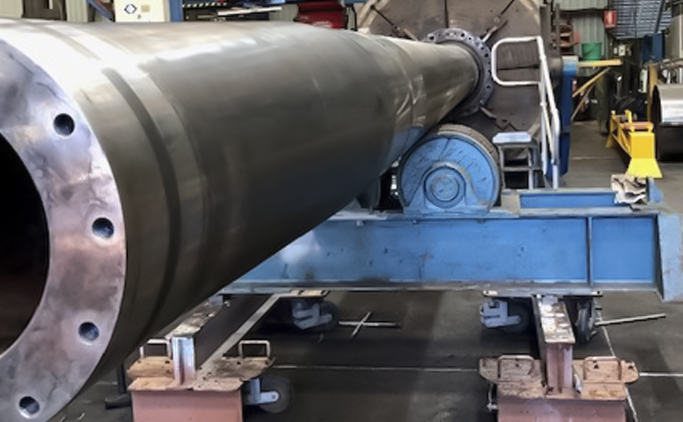Design of rotating steel shafts plays a key role in keeping mobile equipment running smoothly. Failures in parts like bucketwheel or conveyor pulley shafts can result in costly repairs and downtime. In this downloadable article, ASPEC breaks down the key principles of good shaft design, from managing deflection to ensuring strength under abnormal loads. Learn how standards like AS1403 and DIN743 can help ensure your equipment stays reliable and efficient.
Rotating steel shafts are typically one of the most critical components in a mechanical system on mobile equipment. A critical shaft failure, such as a bucketwheel shaft or a conveyor pulley shaft, can be potentially disastrous and can lead to large repair costs and long down times. Owners, operators and designers of such components need to be aware of the issues involved in the design of rotating steel shafts and some general principles of good shaft design.
AS1403 is the current Australian standard used in the design of rotating steel shafts. The rationale behind AS1403 is to design the shaft for an infinite fatigue life under the applied operating loads, utilising an appropriate safety factor.
However, for mobile equipment, often there are very high rare loads that may be applied to the shaft during its lifetime that are not a major fatigue concern. AS1403 does not cover these abnormal high loads that may apply to the shaft. For example, the bucketwheel shaft may experience loads from abnormal digging force (UU as referenced in AS4324.1) or abnormal lateral digging force (SS as referenced in AS4324.1). If not accounted for, these high loads may cause damage to the shafts such as permanent deformation or cracking. To design shafts for strength against the abnormal high loads, the German standard DIN743 is often used. This standard includes the design for fatigue, similar to AS 1403, as well as design for strength.
Other areas a good shaft design should consider include:
- Deflection – ensuring the deflection of the shaft is not excessive for any mounted components.
- Critical Speed – ensuring the natural frequency, or “critical speed”, of a rotating shaft is well above any operating frequencies.
- Inspection – Designing the shaft so that it is easily inspectable.
For more information, please download the paper on Rotating Steel Shafts. The download can be found below.

Adam is a lead mechanical engineer at ASPEC, with over 15 years’ experience in the heavy industrial and resource sector. Adam is a Chartered Professional Engineer with a PhD in the field of mechanical engineering. In his time at ASPEC, Adam has worked on a wide range of projects and gained broad experience in the field of mechanical engineering.

Sara Vance is a Mechanical Engineer for Aspec Engineering with over 10 years’ experience in technical engineering, construction, minerals, metals and plant design. She is a Chartered Professional Engineer and has been with Aspec Engineering since 2014.
